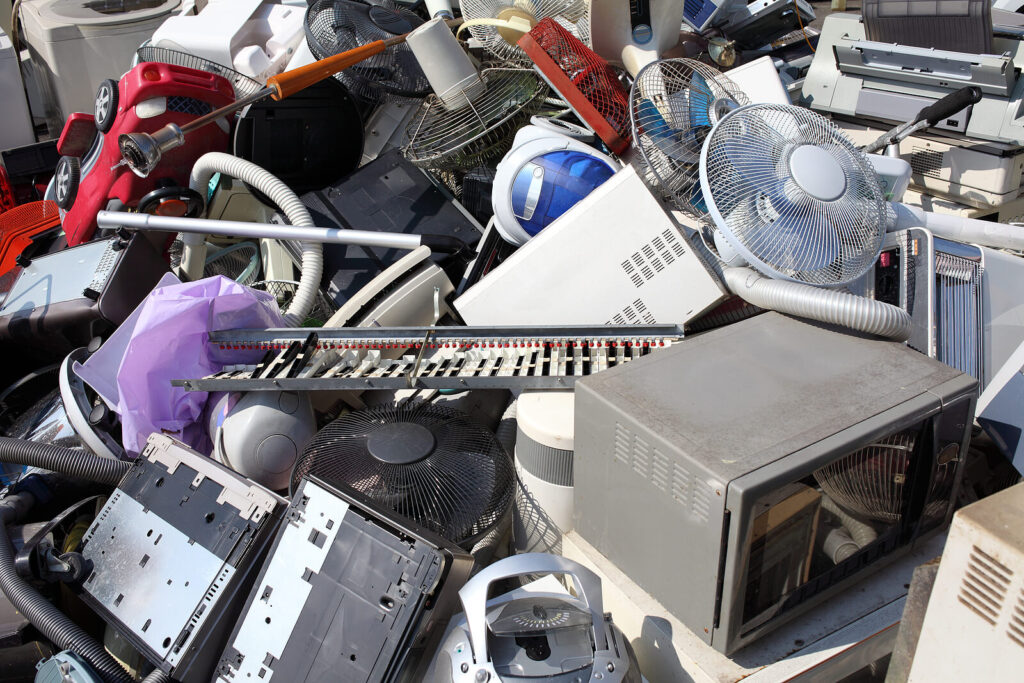Not known Facts About Recycling Lives Services
Not known Facts About Recycling Lives Services
Blog Article
See This Report on Recycling Lives Services
Table of ContentsThe Only Guide for Recycling Lives ServicesThe Ultimate Guide To Recycling Lives ServicesAn Unbiased View of Recycling Lives ServicesAbout Recycling Lives ServicesThe Single Strategy To Use For Recycling Lives ServicesSome Known Details About Recycling Lives Services

E-waste recycling is a lot a lot more complicated than standard waste recycling. When e-waste is accumulated and moved to the recycling centers, employees sort the e-waste right into groups according to their types and designs.
Here, e-waste is thrown into a massive maker and is shredded into little items, but prior to that, it has to first go through a process called de-manufacturing, which describes the activity of dismantling an item into elements. https://zonabeardsley77.wixsite.com/my-site-1/post/recycling-lives-services-revolutionizing-waste-management-solutions. This procedure is to get rid of all the potentially unsafe materials in digital devices that will ruin the machine or contaminate the environment once disposed into landfills
Recycling Lives Services Fundamentals Explained

Next, the waste is further divided with water. At this phase, nearly everything remaining are non-magnetic products; they will certainly go through an additional maker full of water, where materials with a low relative density, mainly plastic, will move, while various other materials, like glass, will sink. Ultimately, before recycled materials are marketed, is to check if there are any kind of staying valuable materials stuck to the plastic.
Recycling Lives Services Things To Know Before You Get This
Recycling e-waste not just prevents harmful compounds from entering our bodies and right into the environment, yet the procedure additionally lowers the unsafe ecological effects developed by the removal and mining of virgin products. Besides, the prospective economic benefits that can be originated from this industry are huge. The disposed of e-waste in 2019 alone was worth greater than US$ 57 billion.
Computer systems and digital devices are made from multiple kinds of plastic, steel, glass and precious metals. Our goal when recycling electronic devices is to divide the different materials from each other. The "item" we generate from reusing is tidy apart streams of recycled plastic, iron, steel, copper, light weight aluminum, glass and valuable steels.
2-1/2 minute video reveals electronics being recycled at a SLS facility. The client records we are able to produce depends on exactly how devices is managed prior to being reused.
About Recycling Lives Services
Our significant recycling websites are equipped with automated industrial shredders, conveyor systems and sorting devices. After risks are gotten rid of, the computer system tools is fed by conveyor right into a large shredder. The shredder splits the product into huge pieces, regarding 2" to 6" in size. This initial step prepares the e-waste to begin the procedure of dividing plastic parts from steel, copper, light weight aluminum, glass and other commodities.
After shredding, the conveyor belts press the e-waste via magnets, eddy currents, infrared video cameras and air jets. These technologies figure out various material types and different arranged material from the e-waste stream. Iron and steel is separated from the e-waste, after that light weight aluminum, copper and circuit card are divided. After the mass steel is removed, the e-waste stream, which is now primarily plastic, is additional separated right into abdominal from polystyrene plastic.
The Best Guide To Recycling Lives Services
Dividing Iron and Steel from e-Waste After shredding, conveyor belts transfer the shredded computers and e-waste under a powerful magnet, which separates iron and steel from the shredded e-waste why not try this out (recycling lives skips). The steel and iron are collected in pallet sized bags and prepared for sale as reused asset materials. Dividing Aluminum, Copper and Motherboard from e-Waste After passing under the magnet, the e-waste continues to relocate through the conveyor belts via added mechanical separators
A visual examination and hand sorting boosts the quality of the extracted products. The separated streams of aluminum, copper, and circuit card are accumulated in pallet sized bags and gotten ready for sale as reused commodity products. Benefits of Recycling Recycling vs - https://anotepad.com/notes/bpwyy5xm. Virgin Material The separated assets are made use of to make next generation products
Utilizing recycled product in the manufacturing of brand-new items has benefits that go much past material reuse. It minimizes pollution and carbon discharges, lowers energy and water usage and maintains useful materials out of land fills. As each product is divided from the e-waste stream, the material is collected in pallet sacks or large cardboard boxes and shipped to an additional cpu or directly to a supplier.
Everything about Recycling Lives Services
It minimizes air pollution and carbon emissions, minimizes energy and water usage and maintains helpful materials out of land fills. SLS is at the leading edge of developing ingenious e-waste reusing services.
Consumers can acquire less things while recycling and reusing extra. Firms can develop items created to last, not to be replaced, and to be recycled.
Report this page